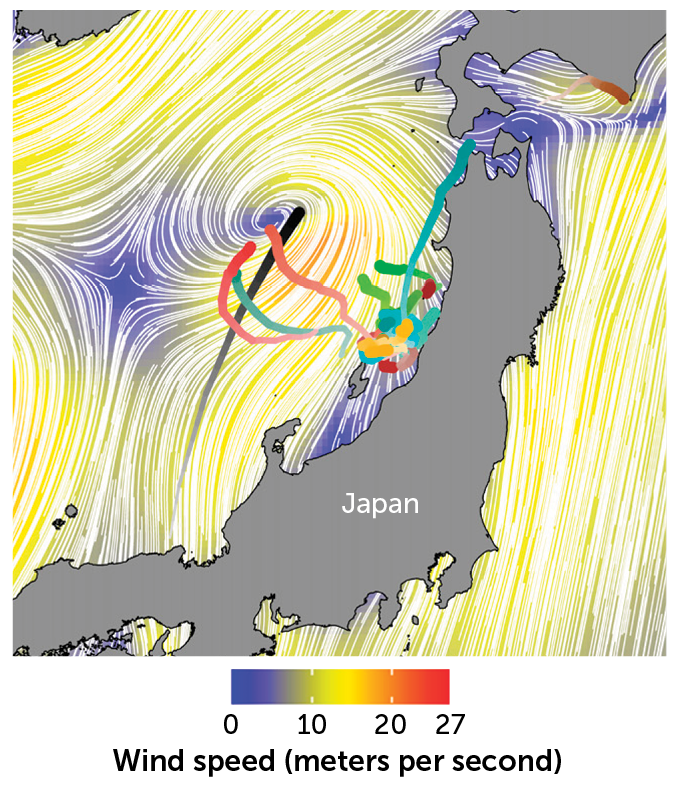Typhoons VS. Seabirds Instincts
The Streaked Shearwater’s paths taken to survive a typhoon based on the strength and direction of the wind.
October 27, 2022
A typhoon is a variety of intense circular storms which specifically originate over tropical waters. Typhoons are commonly characterized by low atmospheric pressure, high winds, and even heavy rains. They have been known to cause billions of dollars worth of damage, which consists of building destruction, ecosystem destruction, and flooding. With that information in mind would you ever consider flying into a typhoon? A species of seabirds have determined a way to survive typhoons by flying into them. Streaked shearwaters are the only species of seabirds that have been known to fly into typhoons. Streaked shearwaters are a species of seabirds whose breeding season is in one of the most typhoon-active areas known as Japan. Their pattern of flying into a typhoon can be determined by wind speed and direction. If the seabirds are in areas where the direction and speed of the wind could blow them inland they will fly toward the eye of the storm. Through the use of GPS to track streaked shearwaters habits during typhoons.
It has also been determined that juvenile streaked shearwaters have a more difficult time navigating typhoons. This is due to their less developed “map sense”, which helps prevent older streaked shearwaters from crashing. Their “map sense” is their understanding of their surroundings and ability to know where they are even when they can’t see exactly their position. This has helped determine the way that streaked shearwaters are flying by understanding their surroundings better. Knowing their environment helps them avoid crashing into trees or rocks while they are flying through strong and fast winds. This makes it so that no matter how strong the wind speeds are or how disoriented the birds become they don’t lose track of where they are or their position in relation to the ground.
Exactly what the shearwaters do is they will fly towards the edge of the eye of the storm. This area is also known as the eye socket or the eye wall, the eye socket of the storm exposes the birds to the highest wind speeds of the storm. Here they ride the winds of the storm as it moves northward. This seems like a bad idea, but this actually prevents them from being affected by the onshore winds, which would send them crashing into trees or coastal land. Unlike other species of seabirds who will take massive detours to survive the storm, shearwaters fly into the storm. If people were to continue studying Streaked Shearwaters methods of surviving typhoons and Streaked Shearwaters habits . If people were to continue studying Streaked Shearwaters methods of surviving typhoons and Streaked Shearwaters habits . We could create ways ourselves to survive typhoons and other natural disasters without avoiding them altogether.


